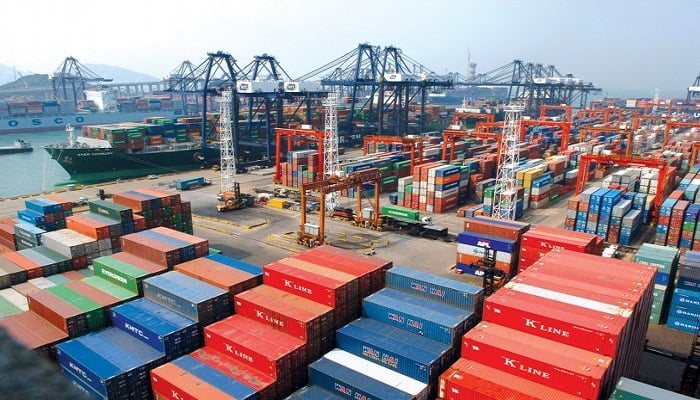
The West African container trade covers some twenty-five countries, with twenty possessing direct access to a coastline. It is a market that has developed greatly in recent years and is home to some of Africa’s most vibrant, promising markets, such as Nigeria, now Africa’s most populous state and a massive, rapidly expanding economy.
Furthermore, the West Africa region is blessed with natural mineral resources, oil and gas deposits and is the producer of a number of commodities desired around the world. Such resources are a blessing but also leave these developing economies open to significant foreign investment and in some cases, influence.
This is most notable in the Democratic Republic of the Congo, which has become a playground for Chinese firms, some state owned, to exert a dominance over the extremely valuable mineral reserves located there. In more general terms the dependence of its largest economies upon the mineral and the, now struggling, offshore sector raises cause for concern alongside its overall lack of development. Yet the potential remains evident, and if West Africa can rise above the challenges it currently faces, it can become an essential part of a changing global economic landscape.
The West African container trade is a vibrant trade, and as at the time of the latest Dynamar study, dated mid-2020, container shipping to and from this part of the world had not really appeared to be impacted by the Covid-19 pandemic. Taking into account a wider timescale, the market has seen a substantial growth in annual trade capacity and the introduction of ever-larger vessels to its trade. In fact, since the previous study of 2018, the provision of Annual Trade Capacity had grown and this was led by the Far East route, in particular, which now sees a number of vessels well in excess of 10,000 TEU employed on key shipping services.
The growth in the scale and demand for shipping services in the region has necessitated the development of the existing port facilities and the demand for new port facilities. A number of large scale developments have and continue to take place in the region, the most important of which include Tema, Ghana and the Port Du Futur in Dakar, Senegal, although this latter project has seen numerous delays and complications. Overall, there are seven private terminal operating groups active in West Africa. All in all, they have interests in more than forty facilities, although this does include some double counting as a number of operators are engaged in joint or multiparty consortia. Alongside are three container carriers who have direct or affiliated interests in terminals. Chief among the full time terminal operators are APM Terminals, now with over ten facilities when taking into account new facilities and Bolloré with fourteen including projects. Outside of these two, most other operators are present in one or two locations only.
Despite the massive infrastructure investment and impressive levels of development seen in recent years, issues remain. In particular, this has been seen in the dominant regional economy of Nigeria. The port of Lagos is still hamstrung by the endemic congestion at the country’s main port, an issue that was discussed in the previous version of Dynamar’s study back in 2018.
The port has become infamous for its congestion, now impacting both the Apapa and Tin Can facilities. At times this congestion reached take up to three weeks for the return of empty containers by road. The issues have also led to the introduction of various surcharges and even the diversion of services elsewhere. As of yet, the numerous studies, deliberations and conferences gave failed to find consensus on a cause and even the possibility of a solution remains even more remote. The various authorities, officials, stakeholders, practitioners and others have engaged in finger pointing elsewhere. They cannot all be right, but they can’t all be wrong either. Perhaps, in combination, they have identified the causes, which if true, means a truly joined up approach is required to solve the crisis.
In another development, and following the virtual eradication of piracy along the East African coast, due in no small measure to the continuous presence of various naval patrols and task forces, the same cannot be said of incidents on the West Coast of Africa. In part, this is down to the different legal nature of the “piracy” that takes place there and the jurisdictions where these incidents occur.
In addition, containerships now increasingly seem to be targets too. As was written about in DynaLiners in June this year, whereas it used to be tankers and their cargoes that were the focus of such behaviour, containerships increasingly feature in the reports. With news of yet another (attempted) attack in the region, this time involving a Maersk operated 4,300 TEU vessel, this makes the ninth containership incident Dynamar has noted this year. The increases has led to Nigerian ports being specifically omitted due to the security situation.
Overall, West Africa continues to be a rapidly developing, vibrant yet somewhat uncertain and volatile region for international trade, yet what nobody can doubt is that its position as central to the future development of Africa as an industrial and trade powerhouse, will continue to be central.




0 Comments